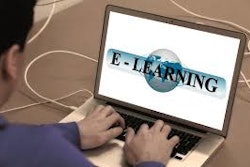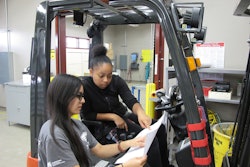
How effective is learning in your organization? After training occurs, are individuals applying new skills and tools in their job roles? Is skills uptake demonstrated? In working with organizations on development initiatives, I’ve found mini-clinics are very effective in embedding learning across the organization.
The Essence of Mini-Clinics
The description for development programs is typical. The high-potential individuals attend an intense 5-day boot camp. The boot camp has four primary focuses: build a common vocabulary for procurement and supply, embed the company process, provide tactical and strategic tools and templates, and build networks for collaboration. For the rest of the organization, a series of custom e-learning modules are developed. The high potential people who attend the boot camp would serve as mentors for the people taking the e-learning programs.
After a year, the leadership assesses the program and quickly recognizes that the e-learning participants were familiar with concepts like market analysis, cost analysis, conditioning, stakeholder engagement and supplier relationships, but they did not know how to apply the tools practically. Often, we run an assessment center to understand how many people could use the tools. We discovered that the knowledge of the concept was there, but the application was missing.
The solution for these clients was the creation of mini-clinics. The mini-clinic consisted of a visiting instructor who taught a different topic every hour. This enabled individuals who wanted to learn more to attend, listen to the module delivery, and use the tools to do case studies to apply the learning. It was surprising that most people took almost all of the sessions. While this was a great learning experience for the clients and me, the real benefits were in the application and use of the tools. Based on my experience, there is no substitute for applying the tools.
At a tech company, for example, students developed and created case studies around their current issues, and the mini-clinic acted as a vehicle to provide learning and problem-solving solutions. The submissions were excellent; the workshop brought the concept home and let the class work through a real-life problem in their business. This session had a high impact and provided people with both tools and confidence to attack the issues. Using company case studies, the content was more meaningful and relatable for everyone in the organization and encouraged collaboration.
Another application for mini-clinics is small group coaching. In working with teams for a construction company where we had conducted strategic sourcing and category management process training, teams brought a project to the clinic and applied all aspects of the strategic sourcing process to their category of spend. They were asked to look at the current state of the category, assess the good or service through portfolio analysis, review the supplier relationship profile, supplier preferencing model, supplier relationship match, market analysis, Pestle model, supplier history and options for sourcing. The output from this session was a detailed planning process that led to a strategic plan to deliver risk and value improvement.
The ability to apply the learning in real time was an experience that will stay with them throughout their career. The people coming to the clinic represented several divisions of the firm. It’s no surprise that their efforts were embraced by senior management when they returned to the division with a solid plan to deliver lower risk and increased value for the business. While teaching and embedding learning in a clinic is a challenging task, the benefits and outputs are rewarding to the individuals, team and management. The procurement leadership of the company continues to enhance the category planning process by codifying the process, templates and tools.
Mini-Clinics Promote Collaboration
It’s not hard to see that this type of approach is especially geared for projects involving cross-functional teams. Typically, I like to launch a cross-functional project by providing a quick overview of the process followed by a session of what data is available to identify what we still have to learn.
I ran a project involving marketing, sales, operations, procurement and finance to review an OTC pharmaceutical product. We also developed a specific project charter with a mission statement, objective, roles and responsibilities, and accountabilities.
The team discovered that the product bottle was too big, and that the raw material could be purchased cheaper internationally. Marketing included three ways to dispense the product with it hand-stuffed into a package. The mini-clinic was conducted over two days. The result was that marketing went to one applicator where the bottle was changed to hold the right quantity of material, and the assembly line was automated. Also, the raw material was purchased from a supplier, freeing needed manufacturing space. The product cost was reduced by over 25 percent, enabling the company to be highly competitive.
Mini-clinics work best when there is a specific goal to embed the learning, solve a problem, focus everybody on a project, or provide education integrated with a process. They take little time investment nor significant money to run. Once the mini-clinic has been conducted, the follow-up team sessions can be handled by video conference or conference. They build integration with a process, provide learning by doing and embed skills that last a career. Give a mini-clinic a try and enjoy collaboration, networking, learning and value/cost improvements.




















